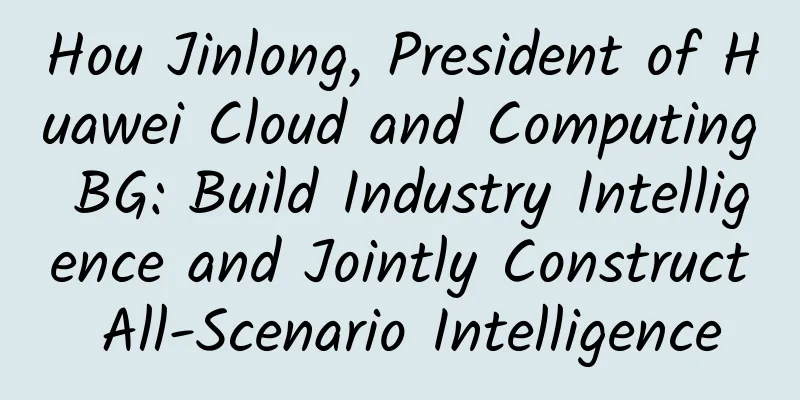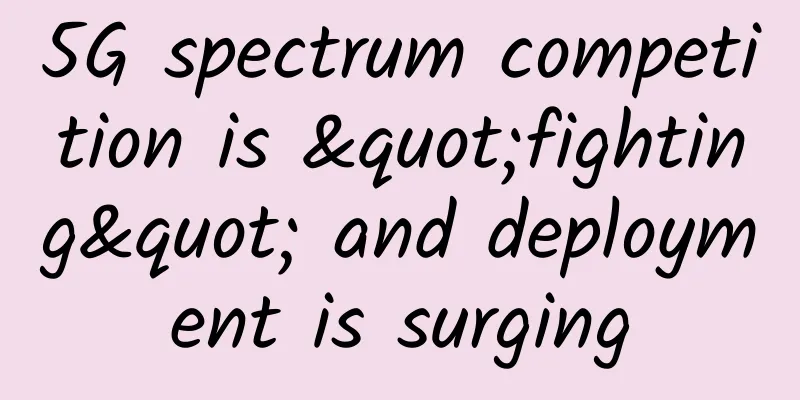Hou Jinlong, President of Huawei Cloud and Computing BG: Build Industry Intelligence and Jointly Construct All-Scenario Intelligence

|
Today, at HUAWEI CONNECT 2020, Hou Jinlong, President of Huawei Cloud and Computing BG, released the Intelligent Body, the industry's first systematic reference architecture for government and enterprise intelligent upgrades. Customers and partners can build their own intelligent solutions based on the Intelligent Body. The Intelligent Body consists of four layers: intelligent interaction, intelligent connection, intelligent hub, and intelligent application, forming an integrated intelligent system with cloud-network-edge-end collaboration. It is based on the cloud and AI as the core. Through cloud-network-edge-end collaboration, it builds an open, three-dimensional perception, global collaboration, accurate judgment, and continuously evolving intelligent system, bringing a full-scenario smart experience to urban governance, enterprise production, and residents' lives. At this conference, Shenzhen and Huawei announced the joint construction of Pengcheng Intelligent Body and the creation of a digital economy model city. At the same time, Shenzhen Municipal Government Service Data Management Bureau, China University of Petroleum, and China First Automobile Group Co., Ltd. shared the application practices of intelligent bodies in the oil and gas, manufacturing and other industries.
Hou Jinlong, President of Huawei Cloud and Computing BG, delivered a keynote speech The following is the full text of Hou Jinlong’s speech: Ladies and gentlemen, friends, good morning, and welcome to the Huawei Connect Conference. Yesterday, Huawei Chairman Guo Ping delivered a speech on "5-machine" collaboration to create new industry value. We believe that the integration of connectivity, computing, cloud, AI, and applications can accelerate the intelligent upgrade of enterprises and industries and bring new value in three aspects: l Reconstructing life experience. For example, one-code access for subways and buses, free-flow toll collection on highways, one face to travel through airports, unmanned supermarkets, etc. l Optimize production processes. For example, AI-assisted COVID-19 CT diagnosis, AI-accelerated drug screening, AI-enhanced sampling and full inspection of synthetic fibers, and AI-assisted contract intelligent review. l Enabling industry innovation. For example, drones can realize intelligent inspections of urban lifelines such as power grids, mines, and ports through the collaboration of cloud, 5G, AI, and edge, achieving unmanned and automated operations. These values show us that intelligent upgrading is the key for enterprises and industries to enhance their core competitiveness. Four major challenges of intelligent upgrade In the practice of intelligent upgrading, we must face many challenges: l First, there are challenges from the edge side. There are many types of terminals and the environments vary greatly. In the intelligent era, these complex and isolated terminals need to be organically coordinated and the software and algorithms need to be continuously upgraded and iterated to allow data and intelligence to flow. l Secondly, there is the challenge of connectivity. Existing physical connections cannot meet the diverse needs of industry scenarios, including bandwidth, latency, number of connections, and industry standards. In the digital world, there is a need to connect people, objects, applications, and data. l Third, there are challenges in applications and data. How can we break down data silos and achieve data interoperability among departments? How can we make new and old applications interoperable and help old applications evolve, while making new application development easier? Finally, AI applications need to be combined with industry knowledge. However, those who understand AI often do not understand the industry, and those who understand the industry do not understand AI. Today, we are officially launching the Intelligent Agent to solve these challenges through the integration of the "5 machines". The Intelligent Agent is a reference architecture for the intelligent upgrade of government and enterprises. It is based on the cloud and centered on AI. Through the collaboration of cloud, network, edge and end, it builds an open, three-dimensionally perceived, fully collaborative, accurate judgment and continuously evolving intelligent system. Intelligent Agent: Reference Architecture for Intelligent Upgrade Intelligent upgrade reference architecture diagram As shown in the figure above, the agent consists of four layers: l Intelligent interaction: Connecting the physical world and the digital world, allowing software, data, and AI algorithms to flow freely between the cloud and the edge. l Intelligent connection: seamless coverage and interconnection of all things, thus achieving application collaboration, data collaboration, and organizational collaboration. l Intelligent center: It is the brain and decision-making system of the intelligent entity. It is based on cloud infrastructure, empowers applications, enables data, and inclusive AI, and supports full-scenario smart applications. l Intelligent applications: Accelerate the deep integration of technologies such as connectivity, cloud, AI, and computing with industry knowledge, collaborate with customers and partners to innovate, reconstruct experience, optimize processes, and enable innovation. Through the deep integration of the "five machines", the intelligent body can "perceive", "think", "executable" and "evolve". The biggest feature of the intelligent body is the collaboration between cloud, network, edge and end, which is an integrated intelligent system. Why is cloud-network-edge-end collaboration necessary? Taking the weather forecast scenario in Shenzhen as an example, high-definition cameras are deployed in various districts across the city to collect image data of clouds, rain, fog, etc. in the sky. The collected data is transmitted back to the cloud in real time through 5G, and the data of each district is pieced together into a panoramic puzzle of the sky and clouds, and then fitted with the weather radar data. Using AI technology, weather changes within 4 hours can be accurately predicted. At the same time, the model trained in the cloud is pushed to the edge, so that the camera can also identify subtle weather changes such as light rain and fog in real time. Through the integrated collaboration of cloud, network, edge and end, smart meteorological applications are provided, so that people can use their mobile phones to understand weather changes within a radius of one kilometer anytime and anywhere, and make travel arrangements based on the changes. This case shows that through the deep integration of 5G, cloud, AI, and intelligent edge, an integrated intelligent system can be formed to create the industry's most advanced smart experience. The following is a detailed introduction to the various components of the intelligent agent. Intelligent interaction: Cloud-edge-end collaboration accelerates the free flow of data and AI Intelligent interaction is the "five senses" and "hands and feet" of the intelligent body, allowing the intelligent body to perceive and execute. The core technology of intelligent interaction is the edge-cloud collaborative operating system IEF. IEF can be built into various partner devices, allowing the device to become the intelligent edge of Huawei Cloud and realize intelligent on-demand deployment. IEF can be connected to various operating systems, such as Hongmeng, so that the Hongmeng ecosystem can also be easily connected to Huawei Cloud. Huawei has open-sourced KubeEdge, the kernel of IEF, and contributed it to the CNCF Foundation, which is the most popular open source community in the edge field. Currently, there are more than 500 core contributors, and it has been widely used in multiple industries. For example, based on IEF, the national highway gantry management system manages nearly 100,000 gantry edge nodes across the country, making all node management automated and intelligent, automatically collecting more than 300 million pieces of information every day, and more than 500,000 edge applications can be pushed from the cloud to the edge for deployment and upgrades, making highways more unobstructed, while providing good support for future vehicle-road collaboration, autonomous driving, etc. Intelligent connection: everything is connected, everything is connected Intelligent connection is the "trunk" of the intelligent entity, connecting the intelligent center and intelligent interaction. For intelligent connection, through physical connections such as 5G, seamless coverage and the interconnection of all things are achieved. On the basis of intelligent connection, HUAWEI CLOUD ROMA can realize the collaboration of applications and data, activate historical applications and data assets, realize the flow and sharing of data assets between new and old applications, and create a network for applications and a chess game for data; WeLink can realize the collaboration between people and organizations, so that employees, customers, and partners can enjoy the new experience brought by intelligent bodies. Intelligent Hub-Hybrid Cloud: An Ideal Foundation for Intelligent Upgrade The intelligent hub is the "brain" and decision-making system of the intelligent entity. Its core is the hybrid cloud base and three enablers: application enablement, data enablement, and AI enablement. With the intelligent upgrade of the industry, many customers hope to have rich high-level services, support local deployment and meet the habits of enterprise operation and maintenance, and ensure data security and compliance. However, traditional private cloud and pure public cloud solutions cannot fully meet the needs. Therefore, we hope to create a hybrid cloud solution that truly meets the needs of government and enterprises. Huawei Cloud's hybrid cloud solution synchronizes public cloud capabilities and can be deployed locally. From resource mixing to capability integration, it matches the organizational structure and business processes of government and enterprises, and realizes a cloud from the user's perspective. First, it is necessary to match government and enterprise organizations and business processes. For example, Huawei's hybrid cloud level 5 VDC (virtual data center) solution can match the multi-level organizational structure and processes of government and enterprises, provide maintenance and collaborative maintenance, and enable enterprise IT employees to move from second-line operation and maintenance personnel to first-line production personnel. Secondly, Huawei Cloud hybrid cloud can be deployed locally, and the data remains local, giving you control over your data. Third, let the government and enterprises synchronize the latest advanced services of the public cloud and keep pace with the world's latest technologies. With a hybrid cloud base, three enabling platforms are also critical. l Application enablement makes application development easier! Every enterprise has a large number of new applications to develop. Huawei Cloud ROMA provides low-code and zero-code development capabilities, supports all-cloud online development, and one-click deployment on the cloud. It can continuously accumulate industry assets, realize software asset reuse, and develop in a Lego style. At the same time, every enterprise has many old applications and old databases. Huawei Cloud ROMA provides a platform-based and service-based approach to allow new and old applications and data to communicate with each other, allowing enterprise IT to stand without breaking, and realize the smooth evolution of enterprise applications and technical architecture. Taking Huawei itself as an example, with ROMA, the application development time was shortened from 10 months to 1 week. l Data enablement makes data application simpler. Many customer data are distributed in different departments, but data can only play a greater role if it is shared across the entire region. Huawei Cloud DAYU provides an original logical data lake solution that allows data to be physically distributed in different departments, and logically centralized management and analysis, to achieve data sharing across the entire region. l AI-enabled, Huawei Cloud ModelArts makes AI development easier. Below I will introduce AI enablement in detail. Intelligent Hub - AI Enablement: Accumulate industry knowledge and accelerate innovation of main business processes AI enablement is the core of intelligent entities. ModelArts simplifies and automates the development and management of AI throughout its life cycle, allowing even novices to develop AI applications. Anyone who can write code can develop AI; experts can become more specialized and focus on the research of algorithms and models. ModelArts accumulates the industry knowledge of experts in suites and industry workflows, templates the experience of industry veterans, and helps partners and developers quickly develop intelligent applications. Taking China National Petroleum Corporation as an example, after accumulating industry capabilities, it used the Huawei Cloud Knowledge Graph Suite to quickly build a professional model in the field of oil well logging, realizing the intelligent identification of oil, gas and water layers, shortening the evaluation time by more than 70%, and achieving an accuracy rate at the expert level. Smart Applications: Collaborative Innovation to Create New Industry Value Smart applications are the value presentation of intelligent entities. Through collaborative innovation with customers and partners, we reconstruct experiences, optimize processes, and enable innovation. It is important for business departments, IT departments, and partners to participate deeply. Only by focusing on the issues and scenarios that business departments care about can we easily create more valuable smart applications. Taking Shenzhen's traffic management as an example, in order to achieve comprehensive management, the Road Management Section took the lead, various departments cooperated, and Huawei and partners participated deeply. Focusing on business needs and scenarios, they broke down the barriers between departments, optimized the overall process, and achieved cloud-network-edge collaboration to create an "integrated traffic management and command business platform." The congestion index dropped by 8%, law enforcement efficiency increased by 50%, and command efficiency increased by 25%. For a detailed introduction to intelligent agents, please scan the QR code or visit the link to download the "Intelligent Agents White Paper". The practice of intelligent agents in Huawei Huawei's own digital transformation adopts the architecture of an intelligent body. In terms of intelligent interaction, through IEF, more than 6 million interactive devices such as cameras, smart screens, and sensors are connected to achieve edge intelligence. In terms of smart connectivity, WiFi 6 and 5G have been introduced to cover all campuses, connecting nearly 200,000 employees and over one million partners and customers through WeLink. In terms of the intelligent hub, all of Huawei's resources and data are gathered on Huawei Cloud, and IT capabilities provide services on the cloud. At the same time, AI is introduced into all of Huawei's main business processes. It has been applied in 200 scenarios, such as sales, R&D, manufacturing, and supply, and has created more than 8,000 digital employees. From Huawei's practice, there are three experiences to share: l AI already has the ability to enter all main business processes. l It is important to focus on the scene. It is best to start from the top scene, especially the massive, repetitive, and complex scenes. l Deep involvement of business units is key. Intelligent entities create full-process intelligent supply In the supply sector, Huawei's business covers more than 170 countries and regions, with 190 central warehouses. We have introduced AI capabilities into every link of the entire supply process through intelligent agents, achieving the following: l The accuracy of cargo volume estimation has been increased to 70%. In the packing process, we have introduced AI sorting algorithms to improve vehicle loading rates for more than 8,000 types of packaging boxes and more than 30 types of vehicle models, saving nearly 100 million yuan each year. l The customs declaration process involves 23 languages around the world. With the help of OCR technology, the text recognition accuracy rate reaches 99%. l Intelligent route optimization reduces pick-up exception fees by 35%. So far, the order fulfillment cycle has dropped by 76%, saving more than RMB 7 billion last year. We will turn all these capabilities into services on Huawei Cloud and open them to everyone. Intelligent agents make engineering delivery easier Project delivery is a key business for many companies. Huawei delivers more than 3 million sites each year, and more than 50 million installation items require acceptance. In the past, supervisors, customers, Huawei, and partners were required to visit the sites in batches and conduct multiple inspections, which was time-consuming and labor-intensive. After the introduction of AI, the video is transmitted to the back-end in real time, and visual analysis and item quality inspection algorithms are used to check the compliance of the work in real time, and all parts are remotely intelligently inspected. The time taken for each site to inspect has been reduced from 4 hours to less than half an hour. After we introduced AI into all aspects of project delivery, we saved more than 6 billion yuan in costs last year. Intelligent agents are being practiced and explored in thousands of industries In addition to Huawei's own practice, intelligent agents are also exploring and practicing in 600 projects. Taking high-speed free flow as an example, more than 9,400 toll stations and 80,000 lanes have been renovated across the country, realizing a national highway network and creating an era of non-perceptual traffic at toll stations. At Yongfeng Steel, through the integration of AI and industrial mechanisms, the accuracy of steel intelligent rating results has reached more than 95%, and the rating efficiency is hundreds of times that of manual work. Open Ecosystem: Coexistence, Co-creation, and Sharing The intelligent body is an open ecosystem. In the process of intelligent upgrading of government and enterprises, a prosperous software and service ecosystem and edge computing ecosystem are the key to the development of intelligent bodies, and will also give birth to two major industrial opportunities. In the next five years, the global software and service market will reach 1 trillion US dollars, and the cloud and SaaS transformation of the software industry is accelerating. Huawei Cloud is positioned as a neutral cloud service provider, with a completely open application software and service ecosystem. Through application enablement, AI enablement, and data enablement, we will help software SaaS and intelligent upgrades, build the best SaaS service development and operation platform, help partners achieve business success, and reshape the sustainable development of the software and service industry. In the next five years, the global market for edge computing will reach 500 billion US dollars, and Huawei Cloud's edge ecosystem is also completely open. Partners' devices can access the intelligent body with the help of IEF, communicate with the Hongmeng ecosystem, and enjoy the benefits brought by intelligent upgrades. We hope to work with our partners to prosper the ecosystem, expand the industry space, and help the industry upgrade intelligently. We always believe that the success of our customers and partners is the real success! Thank you everyone! |
<<: Huawei launches Intelligent Body and works with partners to build full-scenario intelligence
>>: 5G will greatly accelerate the marginalization of the industry
Recommend
RAKsmart: 20% off on cluster servers starting from $113/month, 258 IPs with 1C/2C/4C/8C options, San Jose/Los Angeles/Hong Kong/Korea/Japan data centers
Many friends have the demand for multi-IP cluster...
Why IoT needs LPWAN
LPWAN deployment for IoT devices aims to provide ...
The world is changing dramatically. Let’s talk about the 8 skills that today’s enterprise network engineers need!
The day-to-day job responsibilities of enterprise...
Wireless router, how many little secrets do you have?
Everyone has a wireless router at home. However, ...
Understanding 5G Private Networks in One Article
A private 5G network is a local area network (LAN...
Edge computing has great potential if we play the game of alliance ecology well
To be honest, when I first heard the words "...
HTTP/[0.9 | 1.0 | 1.1 | 2 | 3]
[[379542]] This article is reprinted from the WeC...
RepriseHosting: $35/month-2*E5-2650L, 32G, 1TB HDD/240G SSD, 10TB/1Gbps, Seattle data center
RepriseHosting is a foreign hosting company found...
China's 5G user numbers exceed 100 million, three major operators announce June results
[[334500]] Recently, China Mobile, China Unicom a...
Report: 5G conspiracy theories caused 170,000 hours of downtime in UK base stations
UK regulator Ofcom has revealed that so far in 20...
spinservers: $25/month - 4 cores/16GB RAM/40GB hard drive/10TB@1Gbps/San Jose data center
spinservers recently released a VPS ready for pal...
my country's network infrastructure already fully supports IPv6
At the 2020-2021 Global IPv6 Development and Outl...
Implementing a simple TCP custom protocol based on Kotlin
1. Development Background If you want to be an ex...
HPE (Aruba) Named a Leader in Gartner® 2022 Magic Quadrant™ for Enterprise Wired and Wireless LAN Infrastructure for the 17th Consecutive Year
Aruba, a Hewlett Packard Enterprise (NYSE: HPE) c...
Top 10 Network Monitoring Software and Visibility Tools
If you need to understand what's happening on...









